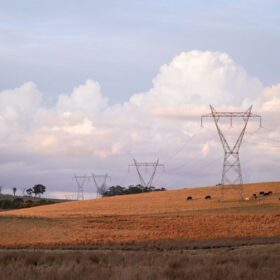Frequency varies whenever electricity supply does not exactly match consumer demand. This frequency imbalance can cause blackouts. Primary frequency response is the response of market participants to automatically change output to provide frequency.
The ability to provide frequency response to keep the grid stable is becoming a valuable service as thermal generators start to exit and the system increasingly relies on weather-driven power generation sources such as wind and solar, as well as batteries.
The proposed frequency performance payments are designed to incentivise market participants to operate their assets in a way that helps to provide primary frequency response to control system frequency and keep it stable under normal operating conditions. The draft measure is also expected to drive down the cost of frequency control services over time through increased efficiencies.
“The Energy Security Board (ESB) has identified grid security and essential system services as a key priority in its Post 2025 market design plan – and essential system services are a key plank of the Commission’s work,” AEMC chair Anna Collyer said.
“As the energy system decarbonises, we need to find new ways to provide essential services like frequency, voltage control and inertia. Doing this well will see clean energy integrated into the grid more quickly, effectively and safely.”
Today’s draft determination follows an AEMC rule made in March last year to place a mandatory obligation on generators to help control system frequency by responding automatically when it changes. At the time, the Commission announced that work would begin on incentive arrangements for providing primary frequency. Today’s draft determination is the culmination of that work. Last year’s mandatory primary frequency response rule was intended to run until 2023. Today’s draft determination also proposes that change be made permanent, and this would operate in conjunction with the incentive payments.
Advice from the Australian Energy Market Operator (AEMO) and independent consultants has indicated that mandatory arrangements have proven effective at improving the frequency performance of the power system at minimal cost to generators and consumers. Making them permanent ensures this continues and complements the accompanying proposed incentive payments, which together will help keep the power grid stable and result in lower costs outcomes for consumers.
The measures announced today also follow the introduction earlier this year of new fast frequency response markets to reward fast responders like batteries, aggregators, wind, solar and demand management services that can respond to frequency requirements within two seconds.
The draft rule includes additional reporting requirements for AEMO and the Australian Energy Regulator (AER) in relation to frequency performance and the costs of frequency performance payments.
Stakeholders are invited to make submissions on the draft rule by 28 October 2021.






By submitting this form you agree to pv magazine using your data for the purposes of publishing your comment.
Your personal data will only be disclosed or otherwise transmitted to third parties for the purposes of spam filtering or if this is necessary for technical maintenance of the website. Any other transfer to third parties will not take place unless this is justified on the basis of applicable data protection regulations or if pv magazine is legally obliged to do so.
You may revoke this consent at any time with effect for the future, in which case your personal data will be deleted immediately. Otherwise, your data will be deleted if pv magazine has processed your request or the purpose of data storage is fulfilled.
Further information on data privacy can be found in our Data Protection Policy.